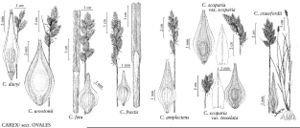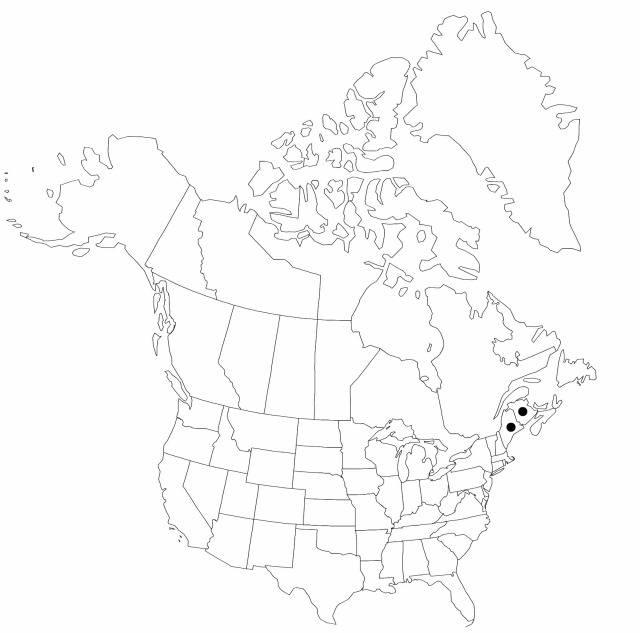Carex scoparia var. tessellata
Rhodora 12: 135. 1910.
Inflorescences dense, 1.5–2.5 cm; spikes aggregated. Pistillate scales reddish-brown, chestnut or blackish with pale or greenish midstripe, apex long-acuminate. Perigynia dark tinged at tip, otherwise pale or golden-brown, contrasting with pistillate scales and beaks, elliptic, 4.2–5 × 1.5–2.2 mm, 2–2.6 times as long as wide.
Phenology: Fruiting early–mid summer.
Habitat: Dry to moist meadows, sandy, acidic soils
Elevation: 0–30 m
Discussion
In the field, Carex scoparia var. tessellata might be confused with the Maine endemic C. oronensis. The two taxa have differing perigynia characteristics and habitats (that of C. oronensis often being drier). Also, the distribution of C. scoparia var. tessellata appears to be near the coast, while C. oronensis occurs throughout much of the Penobscot River Valley and into the upper reaches of the Kennebec River Valley.
Selected References
None.
Lower Taxa
"shortened" is not a number."+timesaslongasinflorescences" is not declared as a valid unit of measurement for this property."not undefined" is not a number."shorter and narrower" is not a number.

